After a walking tour of the city, Dan and I found ourself at the back entrance to the Dresden Cathedral. It has started to rain pretty heavily and so, looking to escape the downpour, we opened the side door in the hope that the church was still open. We walked inside; you could hear the subtle pitter-patter of the rain on the roof overhead, but more than anything, you could hear your footsteps echo in the silence of the great oval room. There were only one or two people inside and for a time Dan, and I wasn’t even sure we were supposed to be there. But seeing as no one was about to kick up out we decided to tiptoe quietly around the nave and explore the building.
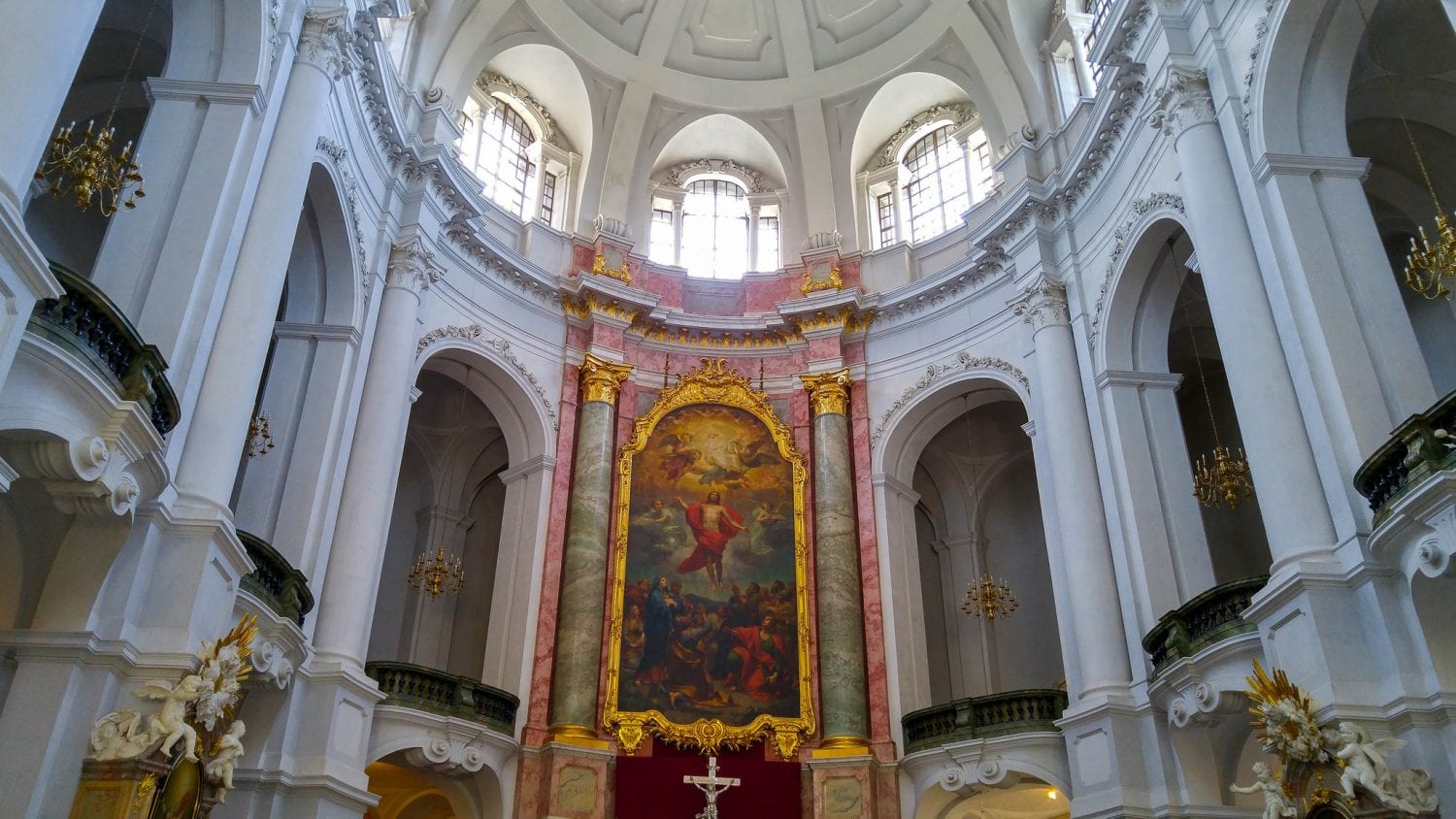
This building was always critical to the Catholic people of Dresden. After Augustus the II converted to the Protestant church, his son, seeing that the large Catholic population of his country needed a place of prayer, commission the construction of this church in 1738. Although like the rest of Dresden, the building was almost destroyed in WWII, the valuables such as the organ and altar pieces were saved and reintroduced into the restored church to bring together the original and restored church. The new church is built to the specs of the original using photography and first-hand experience to get all the details just right.
Architect Gaetano Chiaveri designed the church, and it was built from 1738 to 1751. Like other building of the time, he was inspired by the high baroque style coming out of Italy and France. The bright white oval shell is constant with highly elaborate columns and spectacular altarpieces.
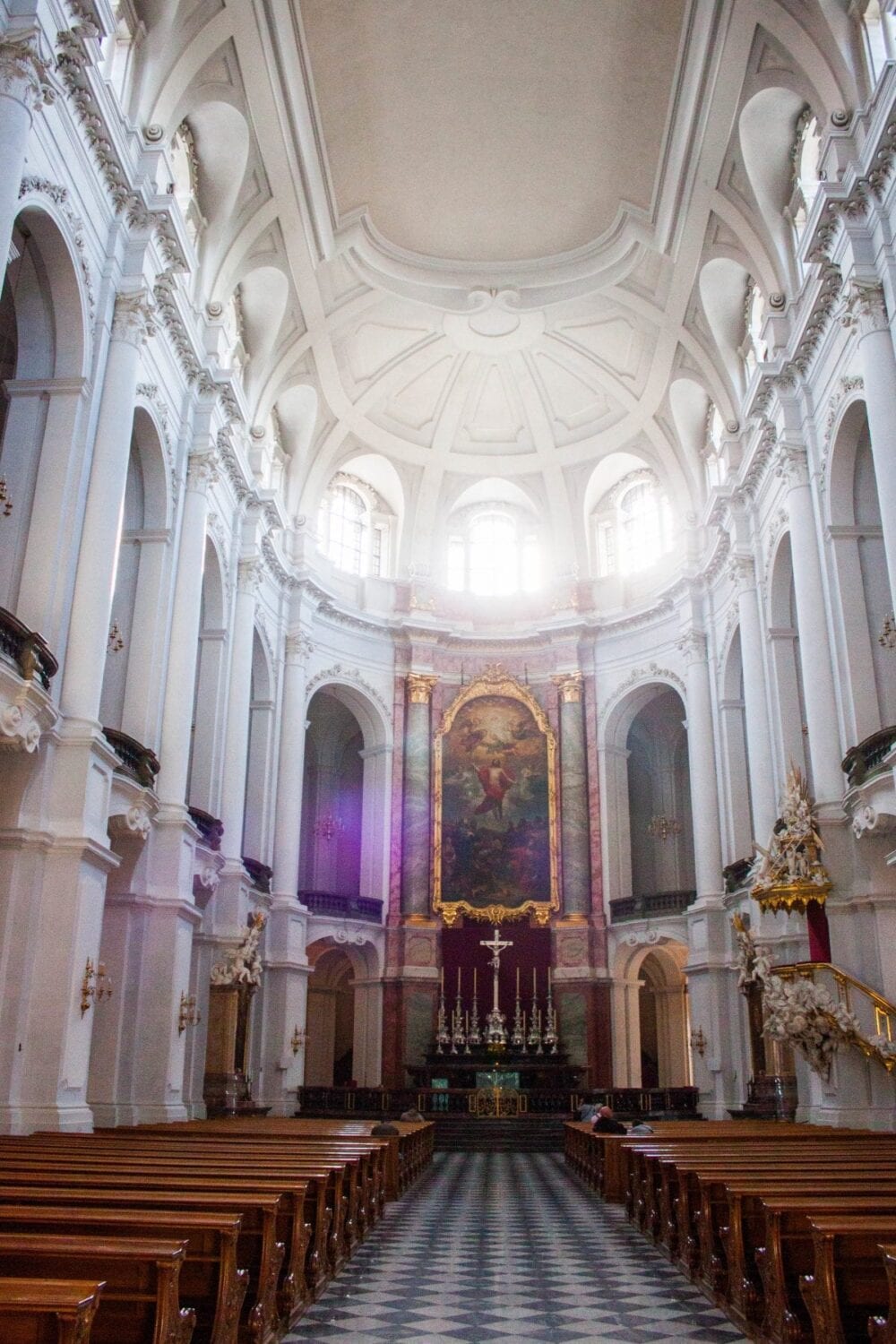
Balustrades frame the church and from these features arise 78 statues, each measuring three meters high. The icons represent historical and religious figures.
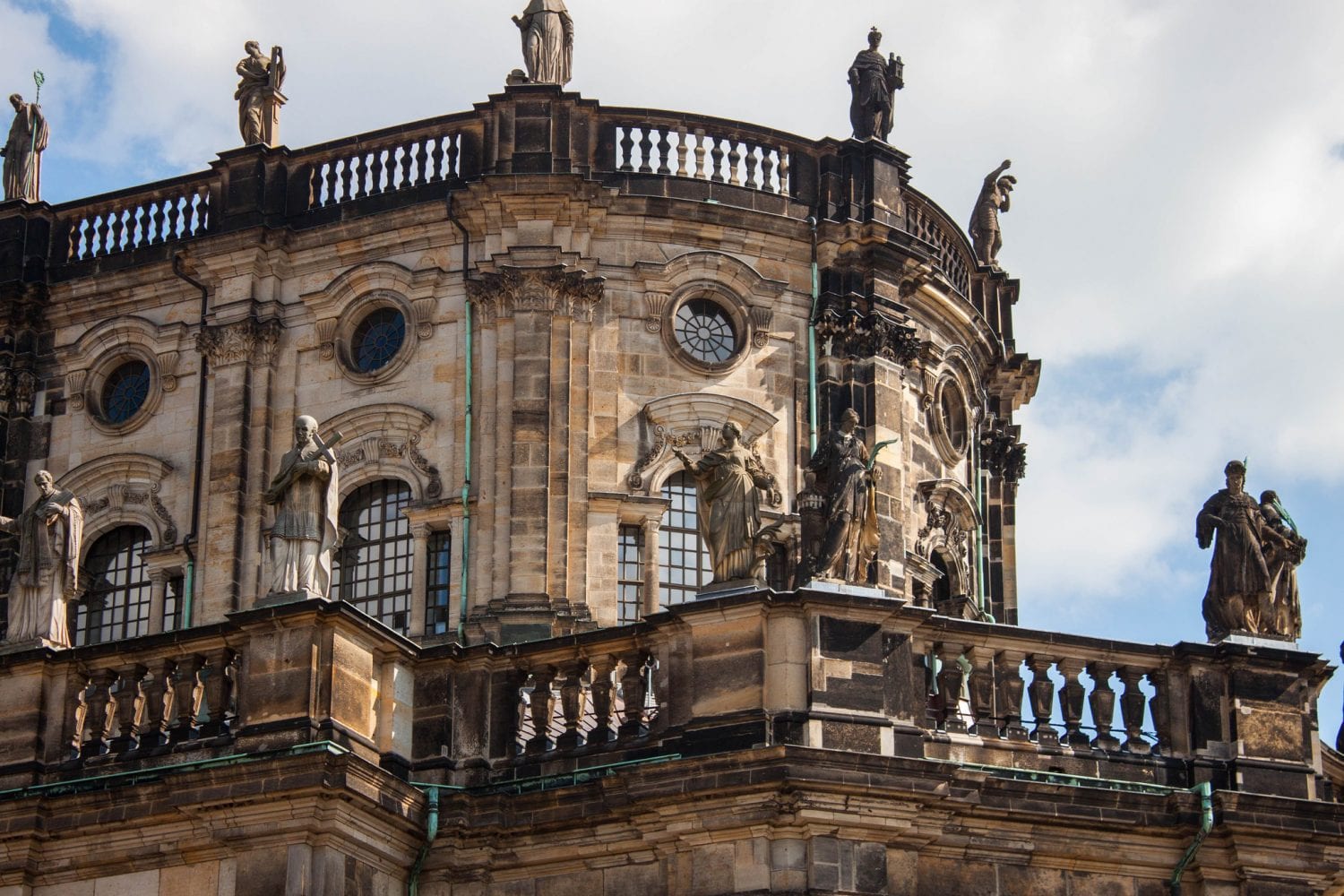
Reflecting Baroque stylistic trends, the Dresden Catholic Cathedral is oval in shape, and its tower reaches 272 feet in height. 78 statues of religious and historical figures adorn the roofline, and the Cathedral contains the largest organ built by famed organ builder, Gottfried Silbermann. This organ is considered to be the greatest work of Silbermann’s career. The silver organ pipes, look almost pale blue in the daylight and blends in with the rest of the pastel colour scheme of the remainder of the organ’s ornamental design.
The spire of the bell tower is designed as a series of stepped monopteros (open circular structures) decorated with Corinthian columns. The top is crowned with a copper onion-dome. The church is framed with balustrades from which seventy-eight statues of historical and biblical figures look out over the city. Each of these statues is three meters or almost ten feet tall.

The interior of the church also boasts a Rococo pulpit made by Balthasar Permoser, a leading sculptor of his time. Creatures and saints pour out from the swirling sculpture, accented only my touches of gold. The overall whiteness of the sculptures means denying different pieces of the pulpit becomes almost like a magic eye puzzle. I could only imagine what it would be like as a member of the congregation, to come every Sunday and al discover something new.
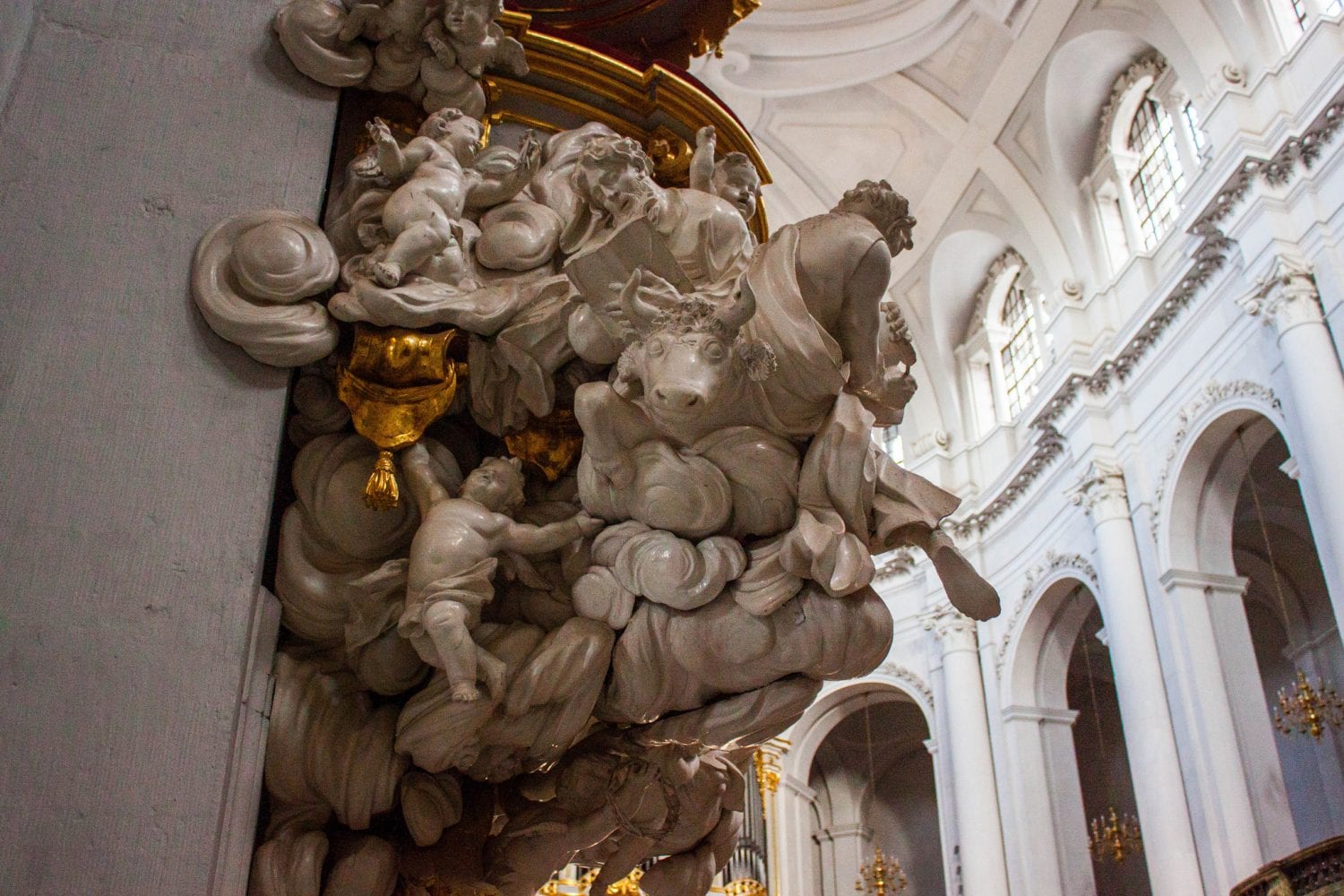
Throughout the rest of the Cathedral are large ecclesiastical painting accented always by sculpted cherubs who hang off the top of the frames, Their arms outstretched, calling you towards them, asking you to look into the painting, to find answers and to come away with a renewed sense of self through the stories therein.
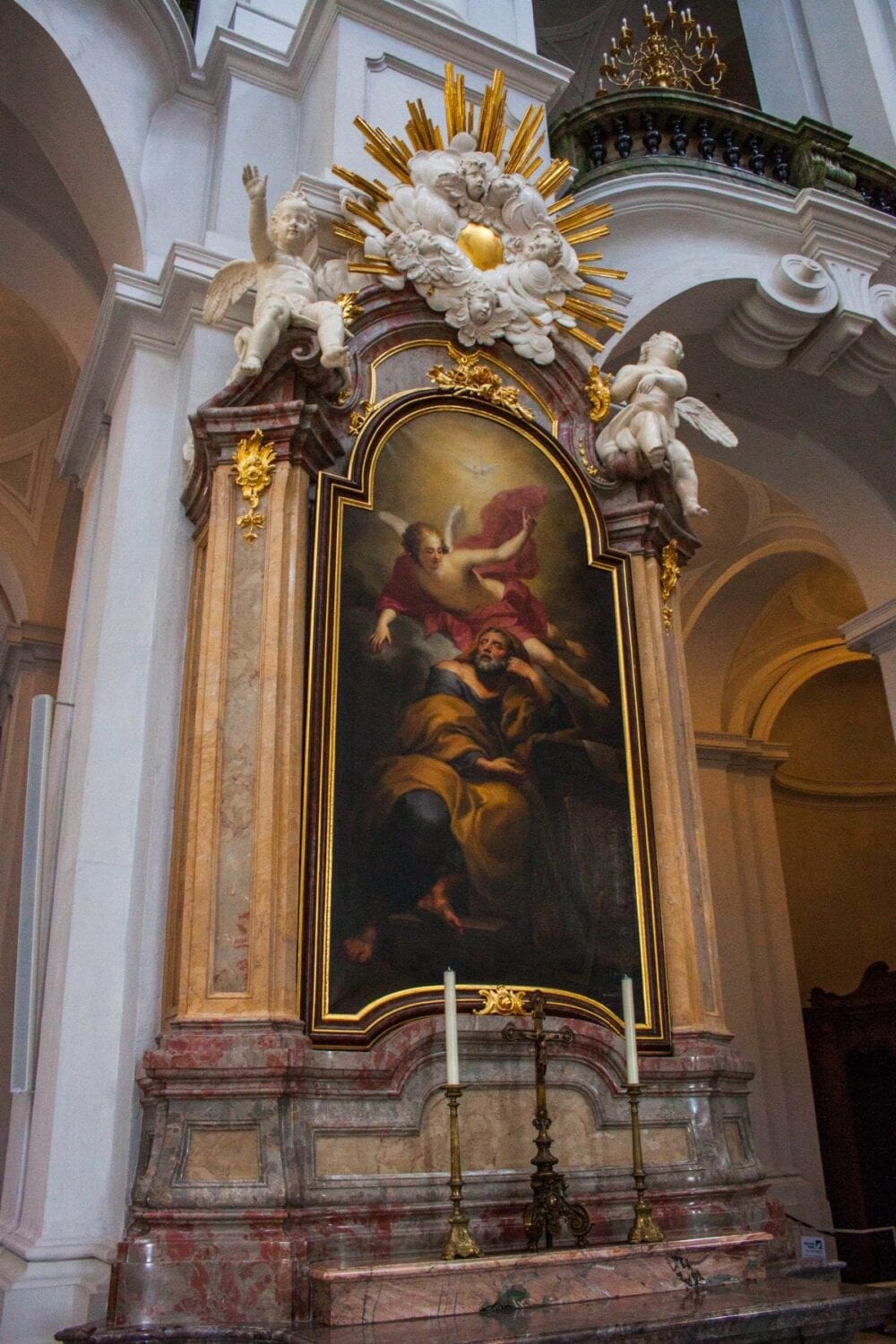
All in all, it was not perhaps my favourite church I’ve ever visited but it certainly has it’s own little charms and for anyone visiting, it’s a short little visit to see a piece of the city that was so important to its people.


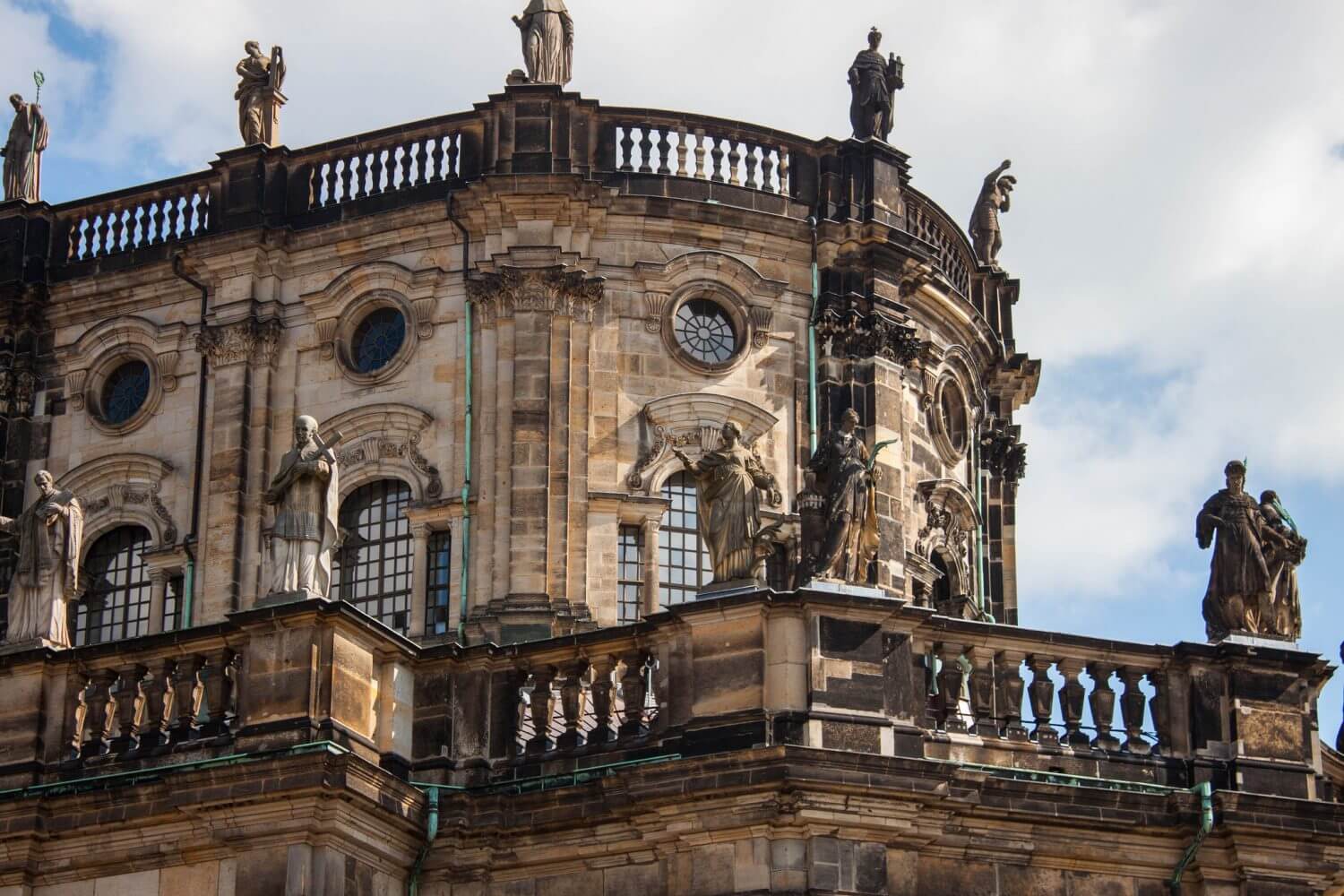
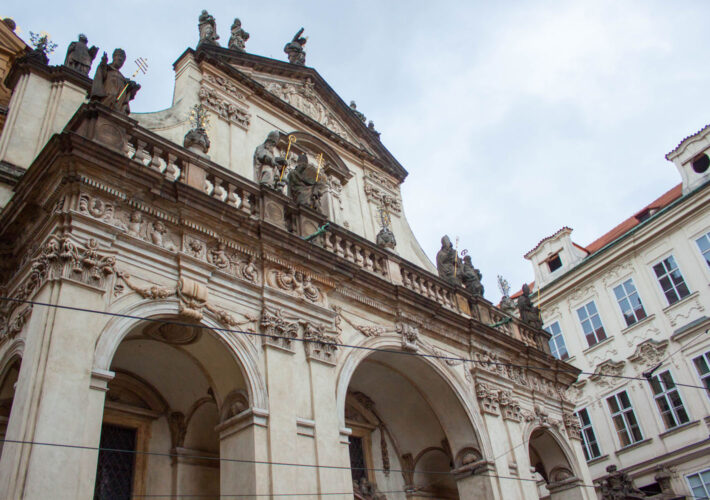
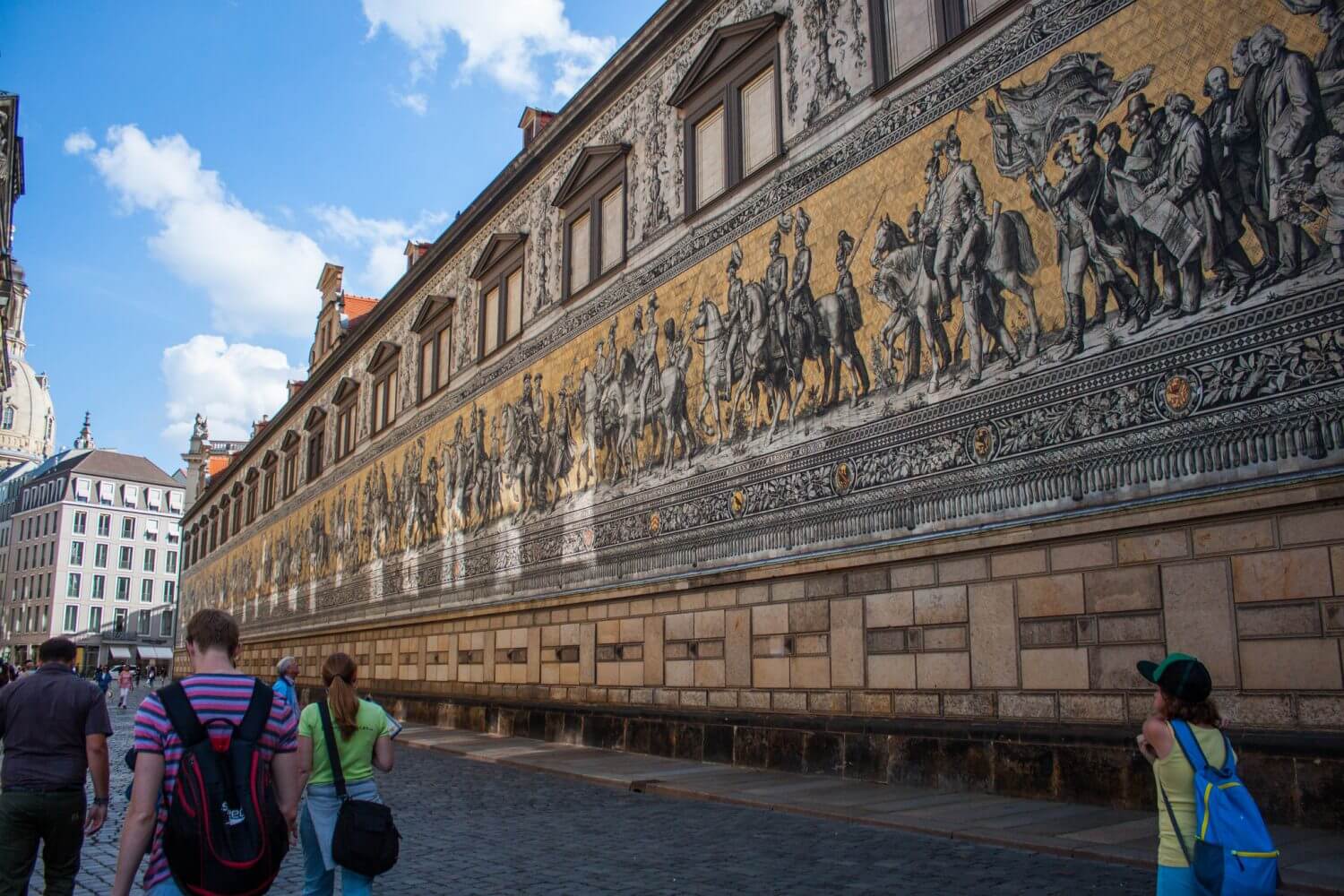
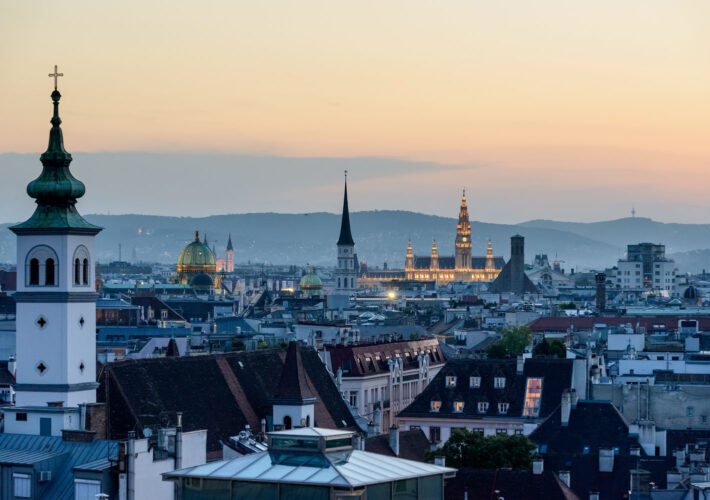
Leave a Comment